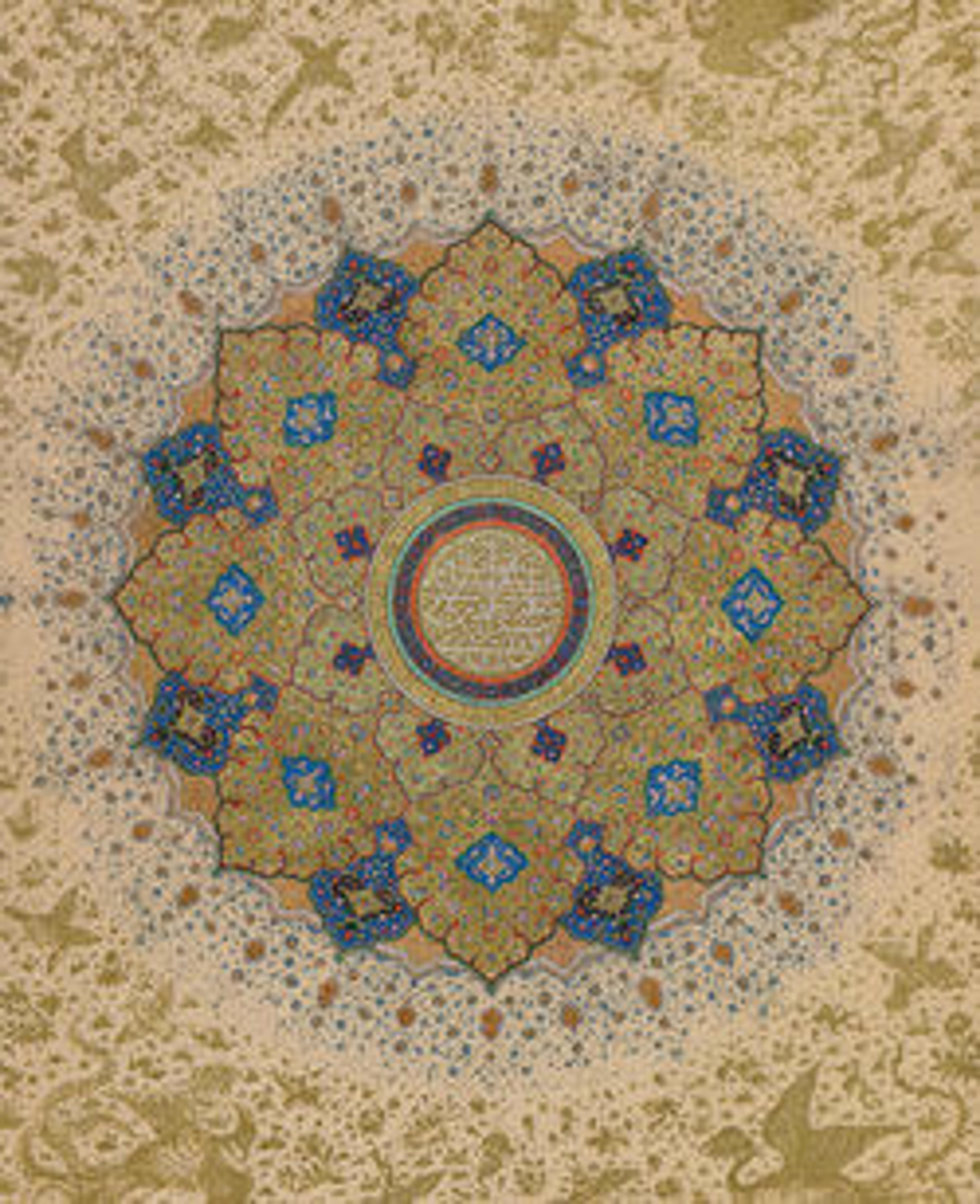Pierced Globe
Artwork Details
- Title: Pierced Globe
- Date: late 13th–early 14th century
- Geography: Attributed to Syria, Damascus
- Medium: Brass; spun and turned, pierced, chased, inlaid with gold, silver, and black compound
- Dimensions: H. 6 1/4 in. (15.9 cm)
H. with chain. 8 3/4 in. (22.2 cm)
Diam. 6 1/4 in. (15.9 cm) - Classification: Metal
- Credit Line: Gift of J. Pierpont Morgan, 1917
- Object Number: 17.190.2095a, b
- Curatorial Department: Islamic Art
Audio
6700. Pierced Globe
NARRATOR: This round object is a combination of technical wizardry and sensual delight.
ELLEN KENNY: What we see here is actually an incense burner; at least we think that it is. It's two hemispheres hinged together. Inside of… this ball we have a little metal dish, and that dish is attached to a series of metal… gyroscopic discs that are holding it in place so that when this ball is tipped in one direction or another - or possibly even rolled around - the contents of that dish will not be overturned. The calligraphic bands are providing us with a list of epithets and praise, sort of the glory to our sovereign, and the king, and the victorious, the triumphant…. We're not absolutely certain who this was praising. But it was quite common actually to have objects on which there were inscriptions full of these kinds of phrases without actually naming a specific person after them. Any important reception with a ruler would be proceeded by wafting the guest with incense.
More Artwork
Research Resources
The Met provides unparalleled resources for research and welcomes an international community of students and scholars. The Met's Open Access API is where creators and researchers can connect to the The Met collection. Open Access data and public domain images are available for unrestricted commercial and noncommercial use without permission or fee.
To request images under copyright and other restrictions, please use this Image Request form.
Feedback
We continue to research and examine historical and cultural context for objects in The Met collection. If you have comments or questions about this object record, please contact us using the form below. The Museum looks forward to receiving your comments.
